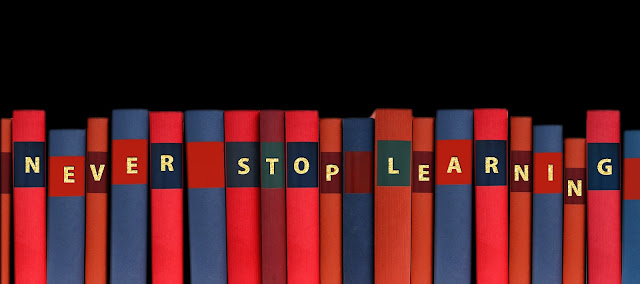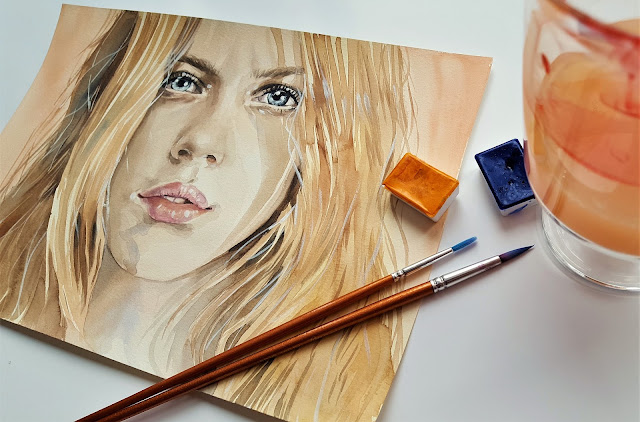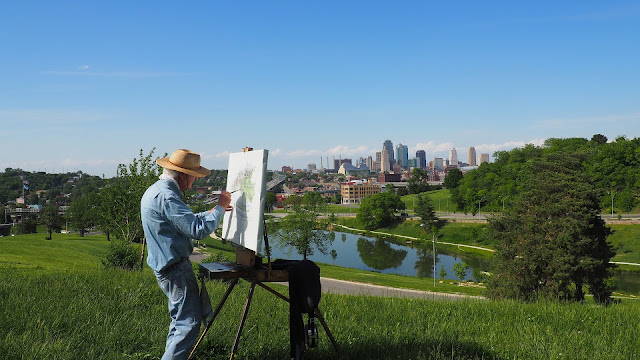
The world is not the same anymore.
Traditional arts are trying to keep up with a constantly evolving world.
As
the world continues to move into a digital phase, there is some fear
that traditional arts could eventually go extinct in the future.
Digital art is just like any other traditional arts.
But, could its rapid growth and wide global acceptance foreshadows the ending of such art as traditional painting?
Why Take Up Painting?

The
reason an individual takes up painting varies completely person to
person, but it can be difficult sometimes to make a decision in the
first place.
This indecision usually comes from the feeling of
uncertainty, where one doesn’t know if he or she is making the right
decision for self or others. It can be totally nerve racking at times
when one doesn’t have a clue at all.
The way to go about resolving
this uncertainty, if one should take up painting, it would come down to
one’s personal purpose. The purpose itself could have multiple
sub-purposes that could influence your final decision.

First,
start out by evaluating your own purpose as to why you should undertake
painting as an activity. You might have to write down these thoughts to
help you visualize them to see why you’re going to do it.
It
could be the feeling of natural fulfillment in the arts. Where you
always had an attraction towards painting and felt so much admiration
for it that you wanted to be part of it somehow, to express and share
your ideas in this manner to the world.
You might be
looking for another activity for personal growth to occupy your free
time constructively. There are quite a few people out there who didn’t
have a clue at all about the artistic world of painting with entirely
unrelated background experiences, but after they tried it, they felt in
love with it.
Painting is part of your family-heritage
line to some degree, where you have many artists amongst your relatives.
If so, this might be part of your personal pride to follow on such
footsteps.
Friends or colleagues of yours recommended it to you as an activity, especially if you live near an art community.
A
way to relieve yourself to a certain extent from recurring stress or
negative thoughts that are plaguing you in a daily basis. You might be
looking for additional alternatives to add to whatever you are already
doing to manage your stress to help you get those emotions and thoughts
out of your head on to a canvas. By doing that, it might assist you in
becoming more extroverted, so you don’t find yourself thinking all day.
Whichever
your personal reasons are, it’s always important to review your own
purpose as to why you are taking up painting. As a matter of fact, any
other activity that you might choose to do, it applies to all that as
well.
The for selecting painting or any other art are always from
your personal goals and purposes in order to find out if it matches
your intentions.
More on Why Painting

Self-understanding
as to why one is making a decision for starting a new activity based on
one’s purpose is one factor, but knowing why that subject is important
itself is of much significance as well.
Well, it starts out by looking at its origins.
The
earliest painting discovered on record goes back quite millennia. It’s
assumed that painting has been around since humans first emerged.
time went by, painting became one of the most basic forms of
communication for mankind throughout the ages, from primitive to
civilized man today.
one looks at the history of man starting from ancient cave paintings
through the Renaissance leading to modern times, one could see how it
leaves a record of mankind’s artistic evolution. This includes traces of
past cultures that don’t exist anymore.
As a whole, painting
has helped provide a glimpse into man’s activities and ideas through
time. Some of these paintings reflected their daily actions, concerns,
spirituality and much more.
There is a great deal more to be
known about the history of painting, but this gives a brief concept on
its origins and importance.
#1 Getting to Know Your Subject

The understanding of a subject is power.
It includes the knowledge that one has to learn in order to apply it in real life to produce your desired results.
This above concept fully applies to the artistic world of painting.
Anyone
can start painting right away. They just need to learn some basics on
the subject, so they can put their creativity to work.
Reading some books about painting is a good start, especially if these books contain lots of illustrations.
The key points you want to learn are:
As
you progress through your own painting journey, you should continue to
further your own education in this subject by learning much more about
it from its distinct painting styles and how they evolved through time.
That’ll help you cultivate your own understanding towards enriching your
own painting skills.
#2 Preparing Yourself Up for Painting

In
order to prepare yourself for painting, you first have to decide on the
type of painting medium that you’re going to use for producing your
artwork. That’ll help you determine the basic tools and materials that
you’ll need.
The most popular mediums used for artistic
painting are oil, acrylic, and watercolors. The supplies for oil and
acrylic paints are quite similar, but if you decide to take on
watercolors, the materials are very different. They are all great paints
to use, but it comes down to your personal preference.
–
Get a variety of colors if it’s your first time painting, but if you
know the primary colors and how to mix them to produce other colors that
you want, go ahead and create those colors yourself.
–
Paintbrushes have their own personalities, so make sure you use an
approved brush for the type of paint medium you decide to use.
– It’s used for intensifying colors for your paintings, which gives
them a final even look and protects them from getting dusty or dirty.
But its application doesn’t apply to watercolors.
– This
is a painting solution used for cleaning oil paint from your brushes. If
you are using watercolors or acrylic paint, you won’t need it because
they are water-based.
– It is used to dilute oil paint, just as if one were using water to dilute watercolors and acrylic paint.
– When cleaning your paint brushes, you’ll need a jar for this.
–
This is a tool to help you hold all the different color paints that you
are going to use for your painting, including getting them mixed as
needed. Palettes come in different materials, sizes, and shapes based on
your needs, whether it’s white plastic, disposable paper, wood and
more.
– This instrument makes it easier for you to mix
all your various paints or clean the top face of your palette, but it
could be used as a painting knife as well.
– It’s a strong
unbleached cloth made from certain kind of plants, which you’ll use to
paint your picture on. The usual types are canvas pads, canvas panels
and stretched canvas.
– It’s used to sketch out what you’re
planning to paint on a canvas, but it’s optional. It’s based on your
comfort level plus what you are trying to do. Some people prefer to use
actual paint to sketch out their basic concept or still life
arrangements that they intend to paint.
– This is optional,
but it can be very useful. There is a short easel that you can place
right on top of a table to put your canvas on, or you can use the
traditional freestanding easel, which is preferred by most artists.
– Rags, paper towels, soap, and water for cleaning after all your creations.
– This item is not necessary for everyone, but if you want to avoid
making a masterpiece out of your nice clothes, it might come handy to
get it. Paint has a tendency to sneak up exactly where you don’t want it
sometimes.

As
a note, watercolors have some exceptions in comparison to oil and
acrylic. Instead of using a canvas for your paintings, you use a special
paper pad for your picture. When using watercolor paint, it’s going to
look very different from using oil and acrylic paint. The paint is a
water-soluble cohesive substance that is thinned down with water, which
gives it a soft, transparent look.
are still not sure as to what type of paint medium you want to use,
simply start out with acrylic paint as your best choice due to its
flexibility.
#3 Setting Up Your Spot to Create

This
final step is all about establishing your painting spot at home, so you
can get to the fun part of materializing all your ideas.
Deciding
where you want to place all these artistic materials is important. Make
it easily accessible and comfortable for you.
If you have a
small apartment, you have the choice of storing these items in a closet.
Or make it part of your home decoration by leaving the easel out for
visitors to see with your latest painting on it along with the rest of
the materials on display. If you have ample space, you can put it
anywhere you want.

That
means you can paint also anywhere. You can go to the park, a public
fair, a beachfront on a nice day or even get with friends and have a
painting spree together.
Just go anywhere that’s relaxing or inspirational, so you can create.
Create, Create and Create Some More

Creation itself can be quite a divine experience.
It has to do with the ability to create something out of nothing:
Thus, painting is one of the best common ways to manifest your ideas.
Go ahead and paint the world, as you want it to be.
And set your thoughts .
https://m.janatna.com



